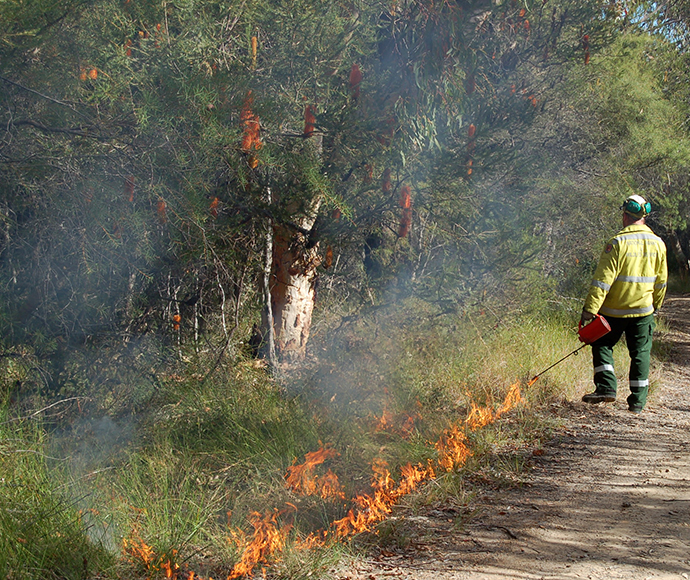NSW National Parks and Wildlife Service (NPWS) successfully completed four important hazard reduction burns in national parks across the Hunter Central Coast region this weekend.

NPWS Hunter Central Coast Director Kylie Yeend said in excess of 240 hectares of bushland close to towns, private properties and other important assets had been treated to provide protection against the risk of bushfire.
"The 4 hazard reduction burns were strategically planned and implemented to protect life and property in Seal Rocks, Fingal Bay, Sawyers Gully and Abermain ahead of this summer," said Ms Yeend.
"We took advantage of the calm weather conditions over the weekend to get these important burns completed to protect these communities for the seasons ahead.
"With more than 50 National Parks and Wildlife Service staff on the ground over the weekend, working closely with the NSW Rural Fire Service, it was a big team effort to ensure each burn was completed safely and successfully.
"We'd really like to thank the communities close to these hazard reduction burns for their understanding and support.
"By their nature, hazard reduction burns release smoke into the air, and while we work closely with the NSW RFS to schedule hazard reduction burns so that smoke impacts are minimised, we appreciate that exposure to smoke can be difficult for some.
"We thank you for your understanding and cooperation as we work to deliver these essential burns," said Ms Yeend.
The NPWS hazard reduction program for 2020 is focussed on essential burns to protect park neighbours, assets or significant habitat to ensure ongoing recovery of the wildlife impacted by the summer bushfires.
All burns across NSW will continue to be coordinated with the RFS to ensure the impact on the community, including from smoke, are assessed at a regional level. Details on specific burns will be made available in advance on the Rural Fire Service website, 'Fires Near Me' app, and on NPWS Alerts website.
All hazard reduction burns over 50 hectares will be assessed by the NSW RFS in conjunction with NSW Health as required to ensure smoke impacts are minimised.
For health information relating to smoke from bush fires and hazard reduction burning, visit NSW Health or the Asthma Foundation.
For up to date information on these, and other, planned hazard reduction activities, visit the Rural Fire Service.






